= Discocactus zehntneri subs. buenekeri (W.R.Abraham) P.J.Braun & Esteves
Kakteen Sukk. 44(3): 64 (1993)
Accepted Scientific Name: Discocactus zehntneri Britton & Rose
Cactaceae (Britton & Rose) 3: 218. 1922 [12 Oct 1922] Britton & Rose
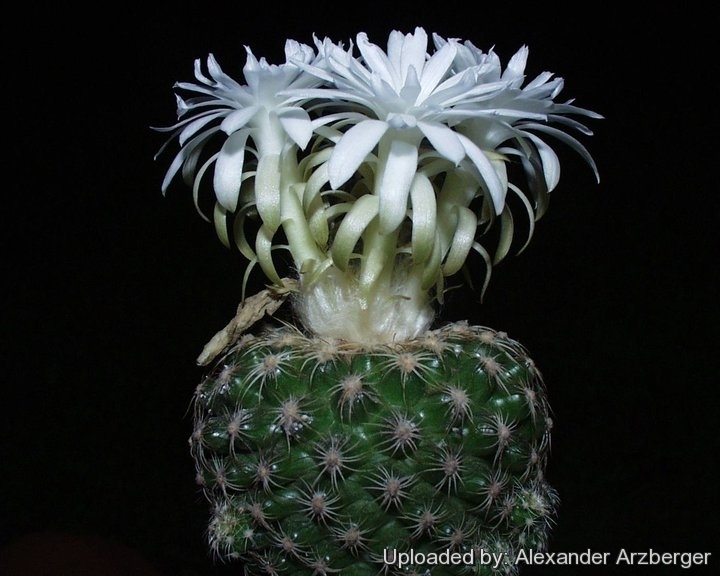
Discocactus buenekeri (Discocactus zehntneri subs. buenekeri) Photo by: Alexander Arzberger
This is one of tiniest cactus which is a true miniature and one of the smallest species in the genus. It is a mature specimen, and it’s only 4/5 cm high and wide. It won’t get any larger. Since it is mature, it puts all its energy into producing the little woolly top, or cephalium.
Origin and Habitat: Bahia Southern Brazil (South America). The exact locality information was not provided in the original descriptions nor in the herbarium sheets of the type specimens.
Habitat: It is native to Brazil’s tropical forests and grows in pure quartz sand at around 1000 metres above sea level.
Synonyms:
See all synonyms of Discocactus zehntneri
Common Names include:
ENGLISH: Moon Cactus, Squash Cactus
Description: Discocactus buenekeriSN|12925]]SN|12938]] (also considered just a form of Discocactus zehntneriSN|12925]]SN|12925]]) is a globose-flattened tiny little plant that (in culture) grows in small groups just like Discocactus zehntneriSN|12925]]SN|12925]] subs. boomianus. Its small clustered, stiff, spination and plump ovoid white fruit are quite different from the long, tangled, flexible spination and elongated narrow red fruit of the Discocactus zehntneriSN|12938]]SN|12925]] group. This species can be propagated vegetatively quite easily, consequently it is quite well represented in living collections and in trade.
Flowers: Cream-white, with heavenly scent, slender funnelform, up to 9 cm long.
Blooming season: This species usually blooms in April, May, or June or as late as August.
Remarks: This plant is part of the D. zehentnari complex which comprises several variable subordinates taxa, but not all are universally recognized.
More...Subspecies, varieties, forms and cultivars of plants belonging to the Discocactus zehntneri group
 Discocactus zehntneri Britton & Rose: Usually globose and completely covered in white thin, needle-like spines, the flower is about 3 cm long and the fruit are red (Origin: Sentocé)
Discocactus zehntneri Britton & Rose: Usually globose and completely covered in white thin, needle-like spines, the flower is about 3 cm long and the fruit are red (Origin: Sentocé) Discocactus zehntneri subs. albispinus (Buining & Bredero) P.J.Braun & Esteves: has larger flattend stems. Spines fewer, longer, white and more recurved. Distribution: South-east of Sento Sé in the Serra do San Francisco, Bahia.
Discocactus zehntneri subs. albispinus (Buining & Bredero) P.J.Braun & Esteves: has larger flattend stems. Spines fewer, longer, white and more recurved. Distribution: South-east of Sento Sé in the Serra do San Francisco, Bahia. Discocactus zehntneri subs. araneispinus (Buining & Bredero) P.J.Braun & Esteves: It has 10 to15 flexible, interlacing spines up to 1-2 cm long, that are pectinate, flexible, creamy white or whitish-yellow with dark tips, becoming pale-brown to whitish, recurved backwards, sitting on the plant like spiders.
Discocactus zehntneri subs. araneispinus (Buining & Bredero) P.J.Braun & Esteves: It has 10 to15 flexible, interlacing spines up to 1-2 cm long, that are pectinate, flexible, creamy white or whitish-yellow with dark tips, becoming pale-brown to whitish, recurved backwards, sitting on the plant like spiders. Discocactus zehntneri subs. boomianus (Buining & Bredero) N.P.Taylor & Zappi: Usually disk -shaped, with dark tipped yellowish spines, the flowers are up to 9 cm long. It has tuberous roots. (Origin: Morro do Chapéu municipality, Chapada Diamantina, Bahia)
Discocactus zehntneri subs. boomianus (Buining & Bredero) N.P.Taylor & Zappi: Usually disk -shaped, with dark tipped yellowish spines, the flowers are up to 9 cm long. It has tuberous roots. (Origin: Morro do Chapéu municipality, Chapada Diamantina, Bahia) Discocactus zehntneri subs. buenekeri (W.R.Abraham) P.J.Braun & Esteves: This species does share the complex commonality of tuberculate ribs and basal offsetting, but its white, club-shaped fruit does not fit with the dark red , much elongated and slender fruit of the other taxa.
Discocactus zehntneri subs. buenekeri (W.R.Abraham) P.J.Braun & Esteves: This species does share the complex commonality of tuberculate ribs and basal offsetting, but its white, club-shaped fruit does not fit with the dark red , much elongated and slender fruit of the other taxa. Discocactus zehntneri subs. horstiorum (P.J.Braun) P.J.Braun & Esteves: Slow growing form (Origin: near Minas do Mimosa, Moreno, Sierra do Espinahaco, Bahia )
Discocactus zehntneri subs. horstiorum (P.J.Braun) P.J.Braun & Esteves: Slow growing form (Origin: near Minas do Mimosa, Moreno, Sierra do Espinahaco, Bahia )
Bibliography: Major references and further lectures
1) Edward Anderson “The Cactus family” Timber Press, Incorporated, 2001
2) James Cullen, Sabina G. Knees, H. Suzanne Cubey "The European Garden Flora Flowering Plants: A Manual for the Identification of Plants Cultivated in Europe, Both Out-of-Doors and Under Glass" Cambridge University Press, 11/Aug/2011
3) David R Hunt; Nigel P Taylor; Graham Charles; International Cactaceae Systematics Group. "The New Cactus Lexicon" dh books, 2006
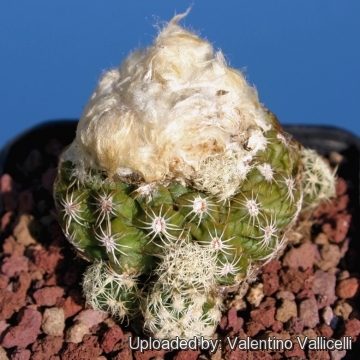 Discocactus buenekeri (Discocactus zehntneri subs. buenekeri) Photo by: Valentino Vallicelli
Discocactus buenekeri (Discocactus zehntneri subs. buenekeri) Photo by: Valentino Vallicelli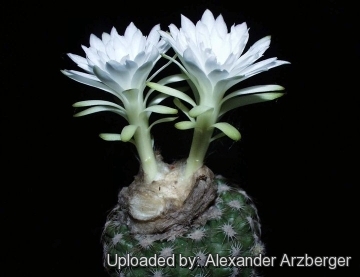 Discocactus buenekeri (Discocactus zehntneri subs. buenekeri) Photo by: Alexander Arzberger
Discocactus buenekeri (Discocactus zehntneri subs. buenekeri) Photo by: Alexander Arzberger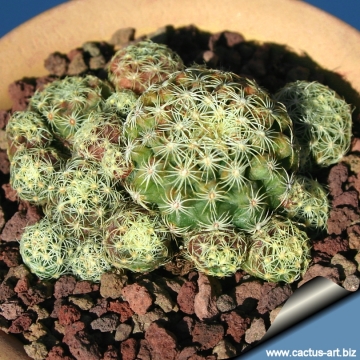 Discocactus buenekeri (Discocactus zehntneri subs. buenekeri) Photo by: Cactus Art
Discocactus buenekeri (Discocactus zehntneri subs. buenekeri) Photo by: Cactus Art Discocactus buenekeri (Discocactus zehntneri subs. buenekeri) Photo by: Cactus Art
Discocactus buenekeri (Discocactus zehntneri subs. buenekeri) Photo by: Cactus Art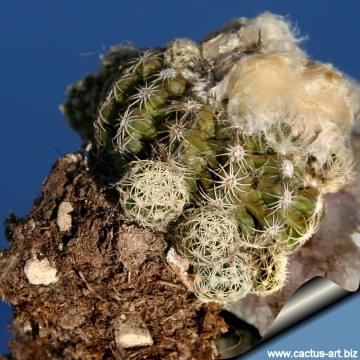 Discocactus buenekeri (Discocactus zehntneri subs. buenekeri) Photo by: Cactus Art
Discocactus buenekeri (Discocactus zehntneri subs. buenekeri) Photo by: Cactus Art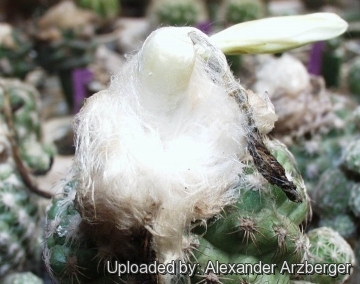 Discocactus buenekeri with fruit. (Discocactus zehntneri subs. buenekeri) Photo by: Alexander Arzberger
Discocactus buenekeri with fruit. (Discocactus zehntneri subs. buenekeri) Photo by: Alexander Arzberger Discocactus buenekeri (Discocactus zehntneri subs. buenekeri) Photo by: Cactus Art
Discocactus buenekeri (Discocactus zehntneri subs. buenekeri) Photo by: Cactus Art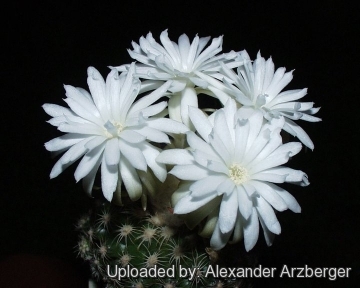 Discocactus buenekeri (Discocactus zehntneri subs. buenekeri) Photo by: Alexander Arzberger
Discocactus buenekeri (Discocactus zehntneri subs. buenekeri) Photo by: Alexander ArzbergerCultivation and Propagation: D.buenekeri is one of the easiest species of the genus to grow, but even so it isn't a plants for beginners, in fact collectors consider the Discocactus to be rarities with requires skilful cultivation. it is rather difficult to grow and frost tender, it can’t stand cold, or even fairly cool temperatures and should be kept at above 15° C if grown on its own roots (8°C if grafted). Need full sun or afternoon shade. They are slow growing and very rot prone when kept on their own roots and though they can’t endure long stretches of total dryness, too much water will rot them, as their weak root systems tend to be inefficient at sucking up water from wet soil. They generally resent being repotted and can take a long time to establish. When grown to maturity, however, it possess an exotic look shared by no other cacti, and it generally attract a lot of attention.
Propagation: Seed or cuttings. Young seedlings are generally grafted on a low stock to keep the plant in a good shape.
More...
Your Photos

by Alexander Arzberger



















